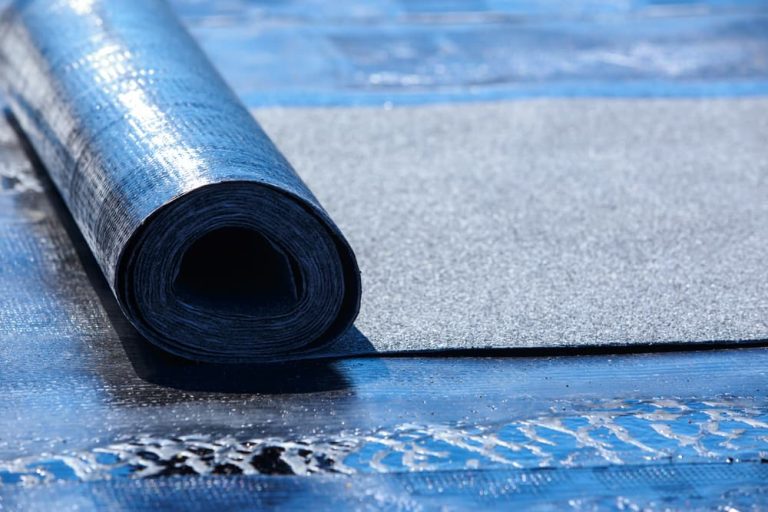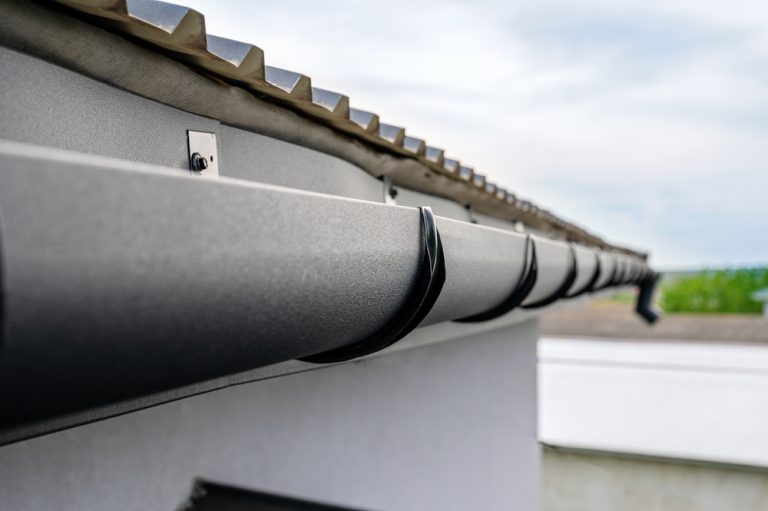Proper attic insulation and ventilation plays a critical role in the longevity and energy efficiency of a home. Adequate ventilation helps to reduce heat buildup in the summer and minimizes moisture accumulation in the winter. This balance is vital for maintaining the integrity of the roof structure and the comfort of the home’s interior. There are various types of roof vents available, each designed to address specific ventilation needs and suit different architectural styles.
Passive ventilation systems such as ridge vents and soffit vents are commonly used in residential roofing. They work together to allow cool air to enter through the soffit and hot air to escape at the ridge, fostering continuous airflow along the underside of the roof. Turbine vents, another passive option, spin with the wind to draw warm air out of the attic. These vents operate without the need for electrical power, capitalizing instead on natural forces to regulate the roof’s temperature and moisture levels.
Active ventilation options include power vents and solar-powered vents, which actively expel hot air from the attic. These systems can be controlled by thermostats and humidistats to activate when certain temperature or humidity thresholds are met. Proper selection and installation of roof vents is essential for optimizing the performance of the ventilation system and ensuring the health of the home’s environment.
Importance of Roof Ventilation
Proper roof ventilation is crucial for maintaining the health of a home. It ensures the longevity of the roof and improves the energy efficiency of the house.
Benefits of Adequate Ventilation
Adequate ventilation provides numerous advantages for a home:
- Temperature Regulation: It helps to balance attic temperatures, reducing the load on air conditioning systems during hot months.
- Moisture Control: Proper ventilation minimizes the accumulation of moisture, which can lead to mold growth and wood rot.
- Energy Efficiency: It can contribute to lower energy bills by allowing heat to escape in the summer and reducing the likelihood of ice dams in the winter.
- Extended Roof Life: By preventing extreme temperature fluctuations and condensation, it can extend the lifespan of roofing materials.
Consequences of Poor Ventilation
The lack of efficient ventilation can have detrimental effects on a home:
- Heat Build-Up: Inadequate ventilation can cause overheating in attics, potentially damaging shingles and underlayment from the inside out.
- Moisture Damage: Without proper airflow, moisture may accumulate, leading to mold, mildew, and structural damage.
- Increased Energy Costs: Homes with poor ventilation may face higher cooling costs due to trapped hot air.
- Compromised Roof Integrity: Consistent moisture and heat can weaken the roof structure, reducing its overall lifespan.
Exploring Types of Roof Vents
Proper roof ventilation is essential for regulating temperature and moisture in the attic, which can extend the life of a roof and improve energy efficiency. This section details the various types of roof vents that cater to different ventilation needs.
Ridge Vents
Ridge vents run along the peak of the roof, providing continuous airflow along the roofline. They blend in with the roof and are an effective way to expel hot air from the attic as they allow for an even distribution of temperature.
Soffit Vents
Located under the eaves of the roof, soffit vents draw in cool air from the outside, which helps to push hot air out through higher ventilation points. This type of vent is crucial for maintaining consistent airflow from the bottom of the roof upward.
Turbine Vents
Often referred to as whirlybirds, turbine vents use wind power to draw hot and moist air out of the attic. They rotate with the breeze to create a vacuum effect that increases the rate of ventilation.
Gable Vents
These vents are installed in the exterior wall at the peak of the gable. Gable vents can act as both intake and exhaust vents depending on the wind direction and other ventilation present on the roof.
Static Vents
Static vents, also known as box vents, have no moving parts. They are installed near the roof ridge and allow hot air to escape from the attic. Multiple static vents may be required to adequately serve the entire roof area.
Cupola Vents
Cupola vents are both decorative and functional, often placed on top of a cupola that adorns the roof peak. These vents provide an escape for heat and moisture but are less common than other vent types.
Each of these roof vent types plays a significant role in a comprehensive ventilation system and they can be utilized in different combinations to achieve optimal air circulation in an attic space.
Pros and Cons of Vent Types
Various types of roof vents serve the essential purpose of regulating attic temperatures and moisture. They differ in design, installation, and efficacy.
Ridge and Soffit Vents Pros/Cons
Pros:
- Ridge vents offer a continuous air flow along the peak of the roof, helping to expel hot air efficiently.
- Soffit vents, placed under the eaves, allow fresh air to enter the attic, facilitating effective cross-ventilation with ridge vents.
Cons:
- Proper installation is crucial; incorrect placement or insufficient soffit vents can hinder performance.
- Aesthetic impact may be a concern as ridge vents run along the roof peak.
Turbine and Gable Vents Pros/Cons
Pros:
- Turbine vents use wind to actively remove hot air, increasing the efficiency of attic ventilation without needing electricity.
- Gable vents are easily installed on existing attics and help in expelling hot air through the attic’s gable ends.
Cons:
- Turbine vents rely on wind, so ventilation can be inconsistent.
- Gable vents may not provide enough ventilation alone and can allow rain or snow to enter if not properly installed with louvers or baffles.
Static and Cupola Vents Pros/Cons
Pros:
- Static vents require no moving parts, which means they are low maintenance and have a lower likelihood of failure.
- Cupola vents add architectural interest and are effective in releasing hot air as heat rises.
Cons:
- Static vents may not provide as much air flow as other vent types, possibly requiring more units.
- Cupola vents often provide more aesthetic value than actual ventilation benefits and can be less effective without sufficient complementary venting.
Selecting the Right Roof Vent
Selecting the right roof vent is crucial for maintaining an energy-efficient and well-ventilated home. Homeowners must assess various factors including home architecture, local climate, and roof design to ensure optimal performance.
Considering Home Architecture
When assessing roof vents, the architectural style of a home plays a significant role. Different home styles may necessitate particular types of vents to complement structural elements. For instance:
- Ranch-style homes: May benefit from ridge vents that run along the peak of the roof, offering a streamlined appearance.
- Victorian homes: Turbine vents can match the intricate design, while providing adequate ventilation.
Climate Factors
Local climate conditions dictate the choice of roof vents to prevent moisture buildup and overheating. It is imperative to select vents that suit the specific weather patterns of an area:
- Hot and humid climates: Require vents providing continuous airflow, like soffit and ridge vents, to reduce the risk of moisture-related damage.
- Cold climates: Should have vents that prevent ice dams, like gable or ridge vents which help balance temperatures between the attic and outside.
Roof Design Considerations
The design of the roof influences the suitability of certain vent types. Each roof design has features that impact airflow and vent placement:
- Pitch: Homes with steep roof pitches may favor static vents for their ease of installation on angled surfaces.
- Complexity: Roofs with multiple levels or valleys might need a combination of vent types to ensure complete ventilation coverage, such as a mix of intake and exhaust vents.
By weighing these factors, homeowners ensure that the selected roof vent will provide effective ventilation, align with home aesthetics, and withstand local environmental conditions.
Installation Insights
Choosing the right installation approach for roof vents is crucial to ensure efficiency and safety. The following subsections discuss the differences between professional and DIY installations, the essential tools and techniques, and the required safety measures.
Professional vs. DIY Installations
Professional installations are performed by roof contractors such as Pinnacle Home Improvements, which has a wealth of experience installing various types of roof vents. We understand the process thoroughly and can ensure that each vent is installed for optimal performance and longevity. On the other hand, DIY installations may seem to be more cost-effective but require a good understanding of roofing structures and the specific vent types being installed.
Tools and Techniques
The installation process for different roof vent types requires specific tools and techniques. Here is a brief overview:
- Box Vents and Ridge Vents:
- Tools Needed: Hammer, nails, saw, utility knife, caulking gun.
- Techniques: Proper placement, sealing, and ensuring that ridge vents are aligned with the roof’s peak.
- Turbines and Power Vents:
- Tools Needed: Drill, screws, measuring tape, sealant.
- Techniques: Secure mounting, electrical wiring for power vents (best left to professionals), and ensuring turbines spin freely.
- Soffit Vents:
- Tools Needed: Drill, saw, screwdriver, fasteners.
- Techniques: Cutting precise openings and attaching the vents without blocking air flow.
The correct use of these tools and adherence to installation techniques are essential to prevent roof damage and ensure the vent’s functionality.
Safety Measures
Safety is paramount when installing roof vents. The following safety measures should be adhered to:
- Use a sturdy ladder and ensure it is placed on stable ground.
- Wear non-slip shoes to prevent falls.
- Utilize safety ropes and a harness when working on steep roofs.
- Always have a spotter or assistant while working at height.
Pinnacle Home Improvements prioritizes safety, using equipment and protocols designed to prevent accidents during the installation process. Our expertise is crucial in managing potential risks associated with roof work. Contact us today to move your project forward.














